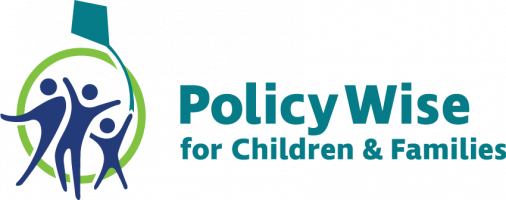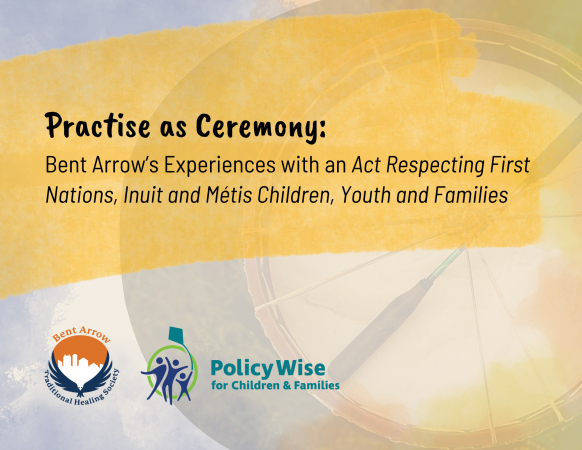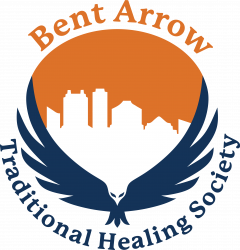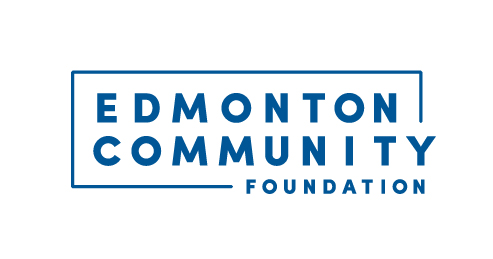Partnering with Bent Arrow to learn and share their experiences implementing An Act Respecting First Nations, Inuit and Métis Children, Youth and Families
Indigenous communities view children as sacred gifts. Through connection to community and culture, children develop their identity and sense of belonging. These connections also support children’s emotional, physical, mental, and spiritual well-being. Maintaining cultural traditions, beliefs, and knowledge over generations contributes to the ongoing vibrancy of Indigenous communities.
Yet, colonial policies and practices have disrupted children’s connections to community and culture. These policies and practices have led to an over-representation of Western worldviews in Indigenous lives and a disproportionate number of Indigenous children in the child welfare system.
In response to the National Truth and Reconciliation Commission’s Calls to Action, the federal government has started reversing and changing their policies and practices. The federal Act Respecting First Nations, Inuit and Métis Children, Youth and Families responds to Call to Action 4 relating to child welfare.
The Act came into force on January 1, 2020. The law recognizes and affirms inherent Indigenous jurisdiction over child and family services. It also sets national standards to protect the rights of Indigenous children to their culture, which involves:
- Making decisions that prioritize the best interests of Indigenous children.
- Promoting connections to culture, kinship, traditions, and language.
- Providing equitable and accessible services.
- Prioritizing placements of Indigenous children with their families and communities.
- Emphasizing prevention and early intervention.
- Recognizing Indigenous authority over their child and family services and systems.
- Collaborating and coordinating between Indigenous, federal, provincial, and territorial governments.
Child and family serving agencies must meet the Act’s national standards regardless of whether Indigenous Nations or groups reclaim jurisdiction over their child and family system. Despite challenges, agencies are learning about the Act and adapting their policies and practices to better support Indigenous children and families.
Walking alongside Bent Arrow
When the federal government introduced the Act, the Bent Arrow Traditional Healing Society was already using culturally responsive approaches to support Indigenous children and families. Bent Arrow is an Edmonton-based, Indigenous-led child and family serving agency whose practices are grounded in Indigenous culture and ceremony.
Along with many child and family serving agencies in the province, Bent Arrow is on a journey of understanding and implementing the Act. This journey presented an opportunity to partner with PolicyWise for Children & Families on a case study to learn, document, and share Bent Arrow’s experiences implementing the Act, with the shared goal of supporting Indigenous children and families.
The team at PolicyWise was honoured to continue collaborating with Bent Arrow, having worked together on other projects like the C5 Collaborative Data Linkage Project. Beginning in ceremony, we saw our role as walking alongside Bent Arrow. We prioritized listening, relationship building, and experiential learning.
This project was unique from others at PolicyWise because it did not have pre-determined outcomes and rigid timelines. Thanks to the flexibility and understanding of the project funder, the Edmonton Community Foundation, we were able to extend project timelines without question. Candace Cleveland, a Senior Manager at Bent Arrow during the project, shared that this provided us with the time necessary “to ensure that the work was done in a really good way. It helped us authentically navigate between two different worlds, Western and Indigenous worlds.”
Creating the Practise as Ceremony visual map
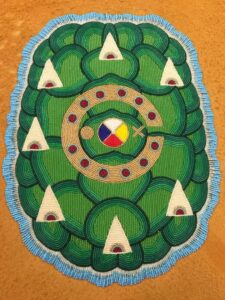 We are proud to share the outcomes of our case study with Bent Arrow. Through a collaborative and iterative process, we determined that sharing our case study visually resonated with Bent Arrow’s approaches to knowledge sharing. This led us to create a visual map inspired by Bent Arrow’s Practise as Ceremony model and beadwork.
We are proud to share the outcomes of our case study with Bent Arrow. Through a collaborative and iterative process, we determined that sharing our case study visually resonated with Bent Arrow’s approaches to knowledge sharing. This led us to create a visual map inspired by Bent Arrow’s Practise as Ceremony model and beadwork.
“Maxine and Kayla were able to pull together the learnings they were part of and understand the approach, which is exciting because that means other people can understand it too,” Cheryl shared. “Messy or clean, people can really see themselves in the story. Really appreciate that they were able to immerse themselves.”
The Practise as Ceremony visual map came together after many “messy” versions and time dedicated to reflection, engagement, and ongoing learning. For example, following a circle discussion, we engaged in a teaching with Elder Tom Snow to deepen our understanding of Indigenous kinship structures. This iterative process allowed us to incorporate feedback, deepen our understanding, and ensure that the final version of the map reflected Bent Arrow’s experiences implementing the Act.
“Our partners at Bent Arrow were incredibly generous and thoughtful with their feedback, teachings, and stories,” Maxine shared. “We became comfortable sharing unfinished work. Even the ‘final’ version of our map isn’t actually final since the implementation of the Act is continuously evolving.”
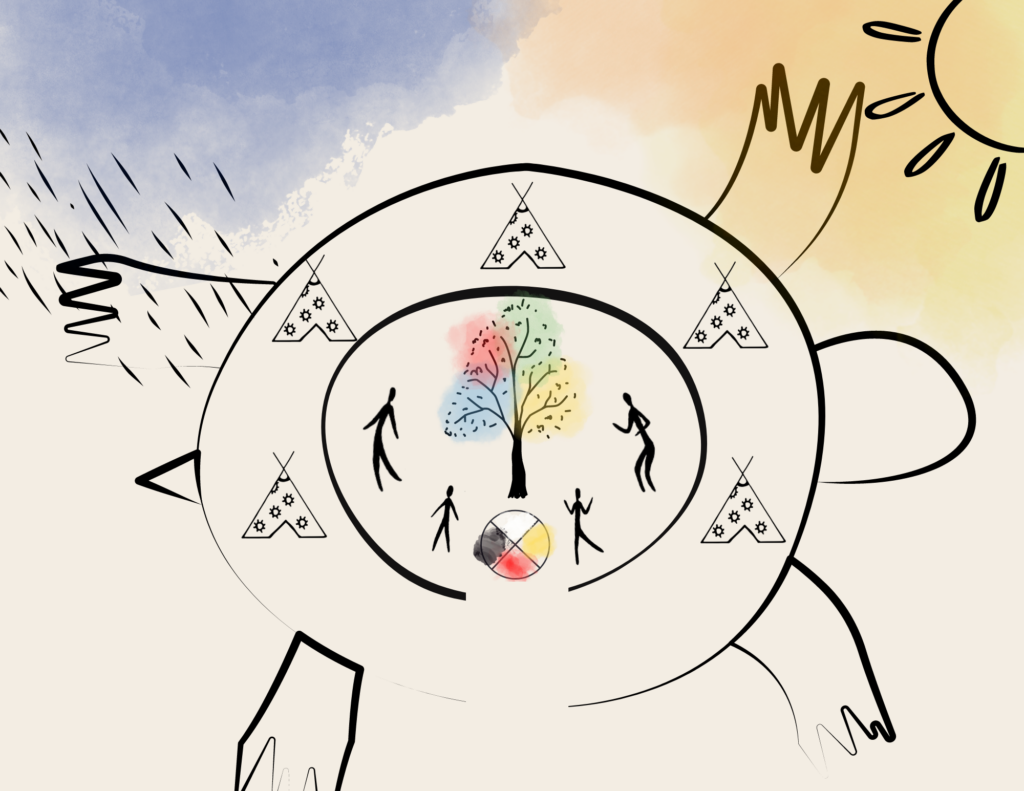 The Practise as Ceremony map represents Bent Arrow’s experiences supporting Indigenous children and families in the context of the Act. The elements of the map include:
The Practise as Ceremony map represents Bent Arrow’s experiences supporting Indigenous children and families in the context of the Act. The elements of the map include:
- The tree and prayer flags representing hopes for positive outcomes of the Act.
- The medicine wheel representing the best interest of the Indigenous child.
- The dancers representing Indigenous kinship structures.
- The stickman representing child and family service providers.
- The tipis representing key relationships and shared understandings.
- The turtle representing Turtle Island, the land on which ceremony and sacred teachings are lived and practised.
- The weather representing contextual factors that may influence the ceremony.
Candace shared her thoughts on the process and outcomes of our case study. She said, “It genuinely came together in a really good way. There was so much thought and intention. And I hope that this will be a beacon of hope for people, something that may guide them to do things differently. I think we’re on the right path.”
The case study can offer insights to child and family serving agencies about how to practise differently, navigate challenges, and meet the Act’s national standards.
We invite you to engage with the case study for more details and links to resources. You can also visit the case study’s dedicated resource page to learn more about the project’s policy and practice implications.
Committing to an ongoing journey of truth and reconciliation
PolicyWise recognizes and honours the diverse cultures, strengths, achievements, and contributions of First Nations, Inuit, and Métis. We strive to deepen our learning about Indigenous culture, history, and ceremony. We seek to build trust and meaningful relationships with Indigenous partners and communities, working alongside and with them. These are commitments we practised in our partnership with Bent Arrow. Our approaches to relationship building and collaboration will continue to evolve as we move forward along our journey of reconciliation.c
Project sponsors, partners, and contributors
We completed this project in partnership with the Bent Arrow Traditional Healing Society thanks to funding from the Edmonton Community Foundation. We extend our gratitude to the Elders, advisors, and talking circle participants for their generosity, guidance, and wisdom.
